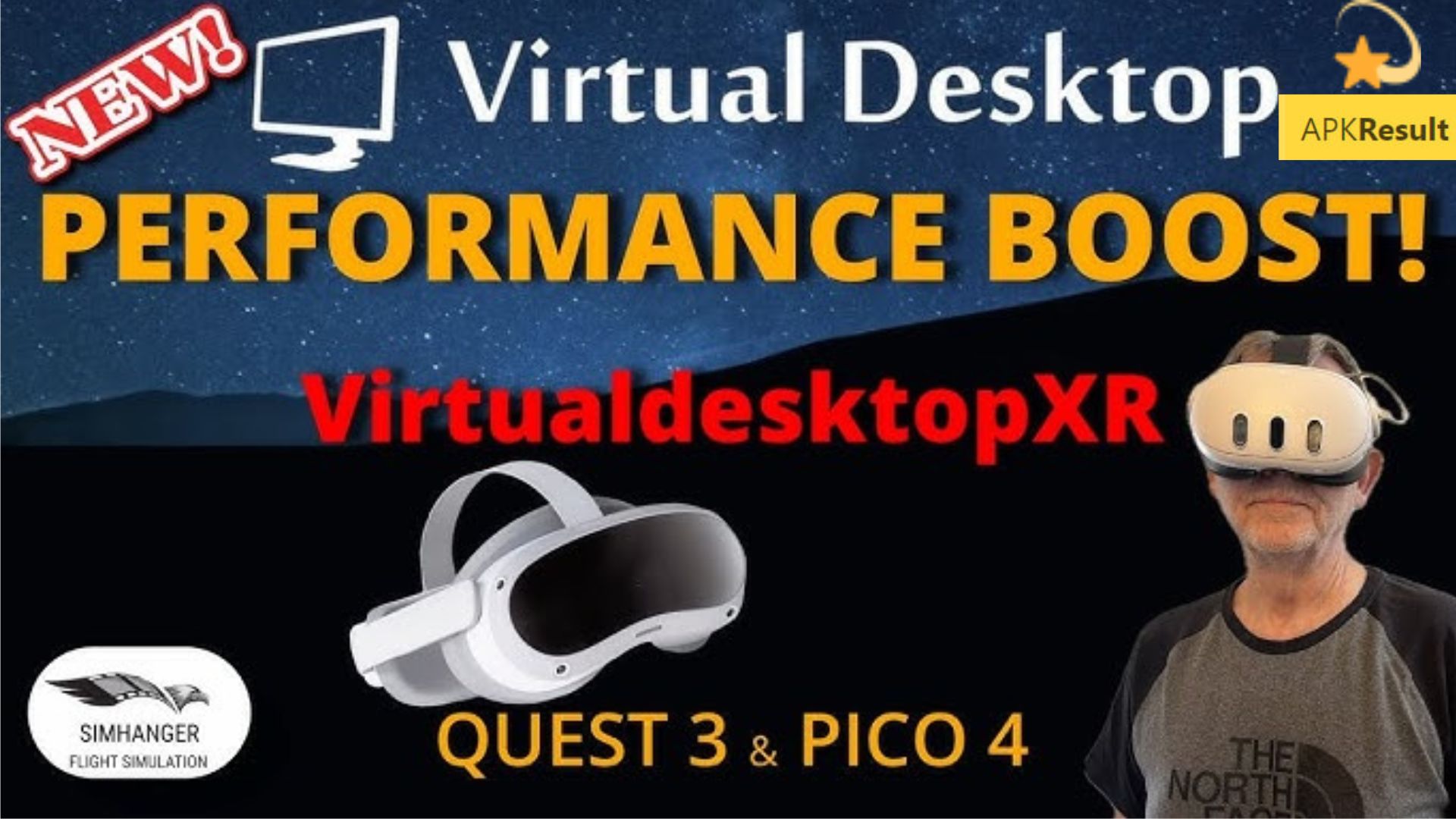Virtual Desktop Pico 4 APK is a remote control software for Android-based virtual reality headsets. It allows users to control a PC over Wi-Fi from the headset, including the ability to stream VR games and software.
The original version of Virtual Desktop was developed as a 3D windowed environment for PC on Oculus Rift and SteamVR. In May 2019, an Android port of Virtual Desktop was announced as a launch app for the Oculus Quest headset. It has now been released for Pico, HTC Vive Focus 3, and HTC Vive XR Elite.

What is Virtual Desktop Pico 4 APK
Virtual Desktop Pico 4 APK owners can now stream popular apps like Half-Life: Alix and Boneworks and VR games wirelessly to PC. In September, the virtual desktop developer Guy Godin confirmed that his app would be available on the new Pico 4 and Pico Neo 3.
You can stream all your favourite SteamVR and Oculus games wirelessly. The Pico 4 has a way of streaming VR content to a PC wirelessly, and its predecessor, the Pico Neo 3 Link, also offered a wired DisplayPort option. Still, Virtual Desktop is a popular general-purpose utility that gives you the connection of your devices and enables the PC. VR makes things easier. To access archived content.
This year, the software is regularly updated with new functions. In addition to VR-capable PCs, VR games can be streamed with the virtual desktop in high-fidelity conventional games or films on a large virtual screen, which is only possible with a more miniature, more powerful PC.
The developer told UploadVR that Virtual Desktop for Pico 4 will be available in other markets following the platform's cancellation in 2018, making Pico Quest 2 its most serious competitor. This article was originally published on September 22, announcing that Virtual Desktop will be available for Pico headsets. It was updated and republished when it was published in October.

What are the new features?
Put, a Virtual Desktop Pico 4 APK is an interface to a desktop environment (think Windows) outside the confines of a screen, and this is where VR headsets come into play. Instead of looking at a screen, your virtual environment becomes the main interface of your PC.
The most common virtual desktop application for VR headsets is “Virtual Desktop (Real as We Know It)” and supports the most popular VR headsets today.
User experience.
One thing we love about Virtual Desktop Pico 4 is that it is highly customizable. First, we can adjust the desktop window's size, spacing, height, and curvature. It also has a feature that allows the window to follow your head movements.
Announcement: Scroll to continue reading.
The app allows us to choose from various window environments, from a floating fog to a home theatre that displays desktop windows on a fixed “screen”. So if I want to stream Netflix and pretend I'm in a movie theatre, I can simply axis an environment and press play (more on that later).
An entertaining, if strange, VR experience 9.
We can use the PICO 4 controller to navigate the desktop environment. Although the controls are quite simple, you are at the mercy of the Windows on-screen keyboard. Sometimes, the text field is not visible when you select it. Therefore, you want to be able to pin it to the taskbar to restrict access.
Stability.
Since a wireless connection relies heavily on proximity to the router, we found that the router works best in the same room. When walls block us, latency issues arise. Luckily, we can adjust the streaming codec and enable auto bitrate, automatically adjusting the resolution to compensate.
Multi-display mode.
Virtual desktops do not offer a dedicated multi-screen experience. This allows us to change monitors with a switch. I want to be able to see two or three monitors at once and scroll through my peripheral vision.
Displays the streaming platform.
Some streaming platforms and browsers like Netflix and Microsoft Edge do not allow streaming their content to VR headsets. We managed to find a solution with Firefox.

How does this work?
Instead of connecting the PICO 4 to your PC or Mac, the Virtual Desktop app streams everything from your computer to your VR headset, giving you remote access to your computer, similar to an app like TeamViewer. This means we can access the PC without leaving the VR environment from PICO.
How to connect Virtual Desktop Pico 4 APK via a USB cable?
The easiest way to connect the Virtual Desktop Pico 4 APK to a PC is to use a USB-C cable. Here is a step-by-step guide:
- Locate the USB-C port on the PICO 4. You'll find it on the left side of the VR headset, just below the headband.
- Connect one end of the USB-C cable to the PICO 4 port and the other to an available USB port on your computer. Make sure the cable is not excessively bent or stretched.
- Download the Streaming Assistant for your PC here. After installation, open the streaming wizard. Check that your PICO VR headset is connected to your computer via a cable.
Open the streaming wizard on PICO 4. Please turn on the VR headset and launch the app to install it. After installation, select the connection mode. Find your computer in the list of available devices and select it. Click on the “Connect” option. Your Virtual Desktop Pico 4 APK is now ready for use with your PC.

Conclusion
Choosing the proper connection for your Virtual Desktop Pico 4 APK, USB or wireless, depends on your preferences for portability and simplicity. If you want more freedom in your tasks, use a virtual or wireless desktop with Streaming Assistant. For reliability and ease of use, a USB port is ideal. Experiment with both to get the most out of your VR experience, and visit the PICO website for more information on how to get the most out of your VR experience.






